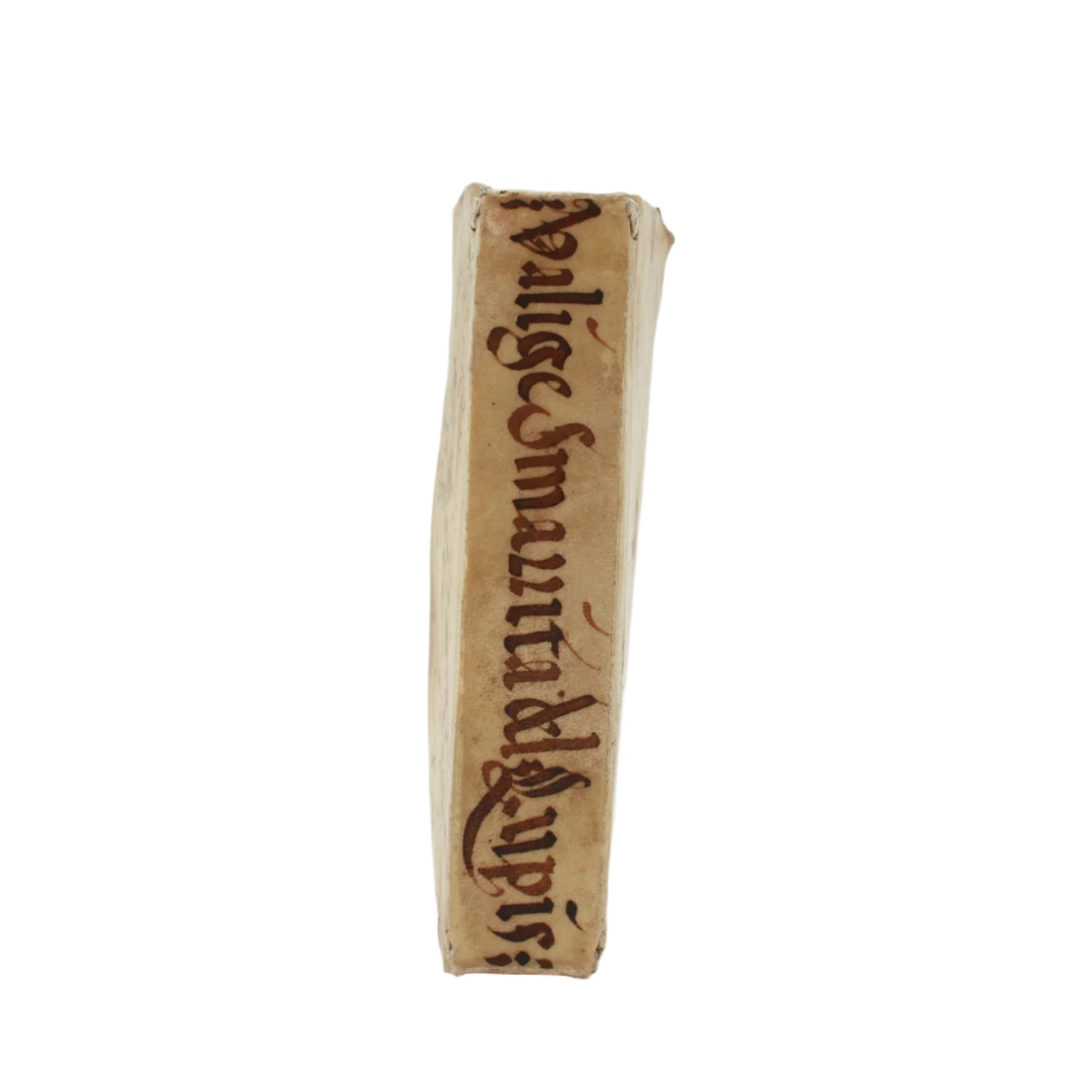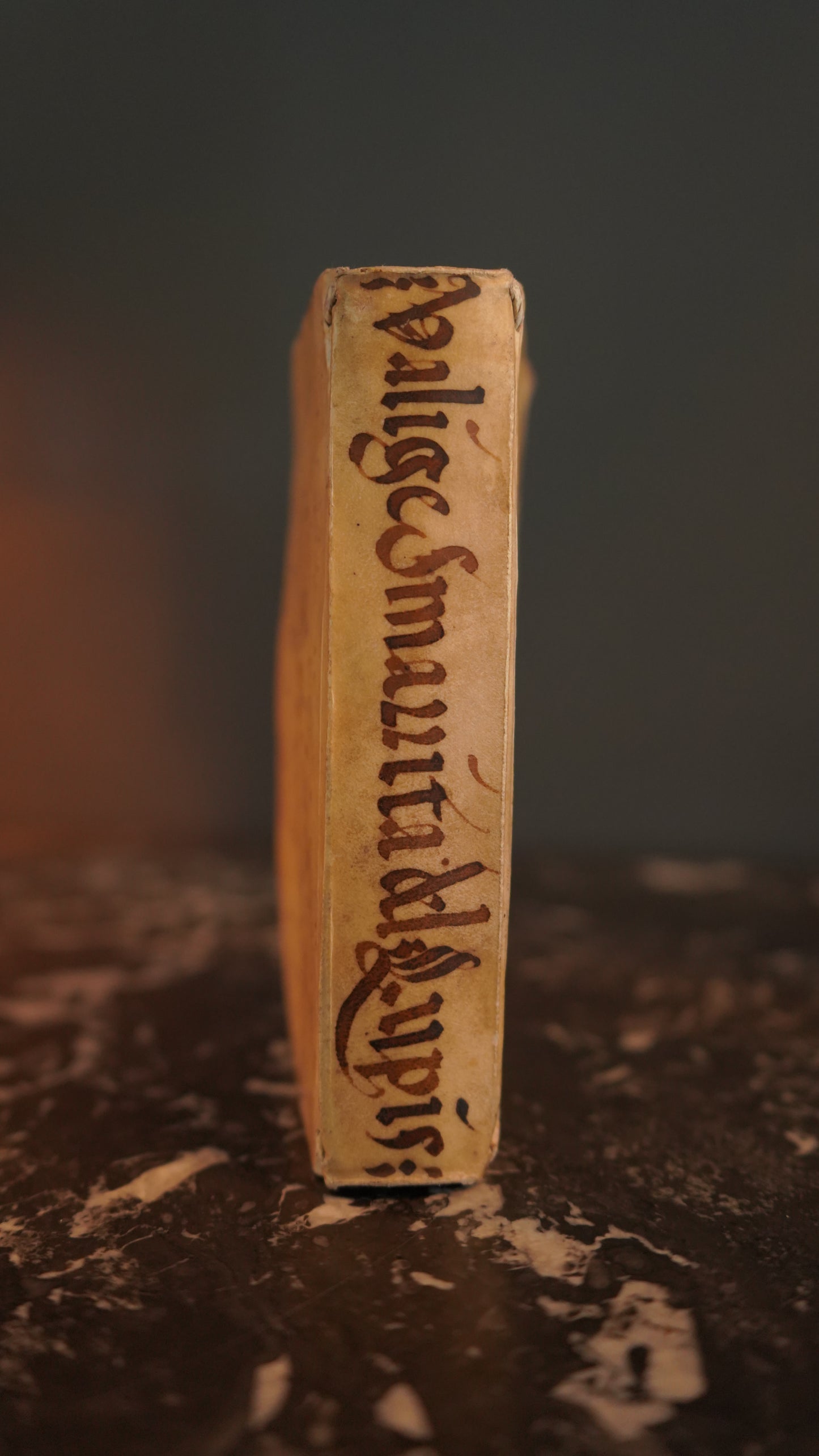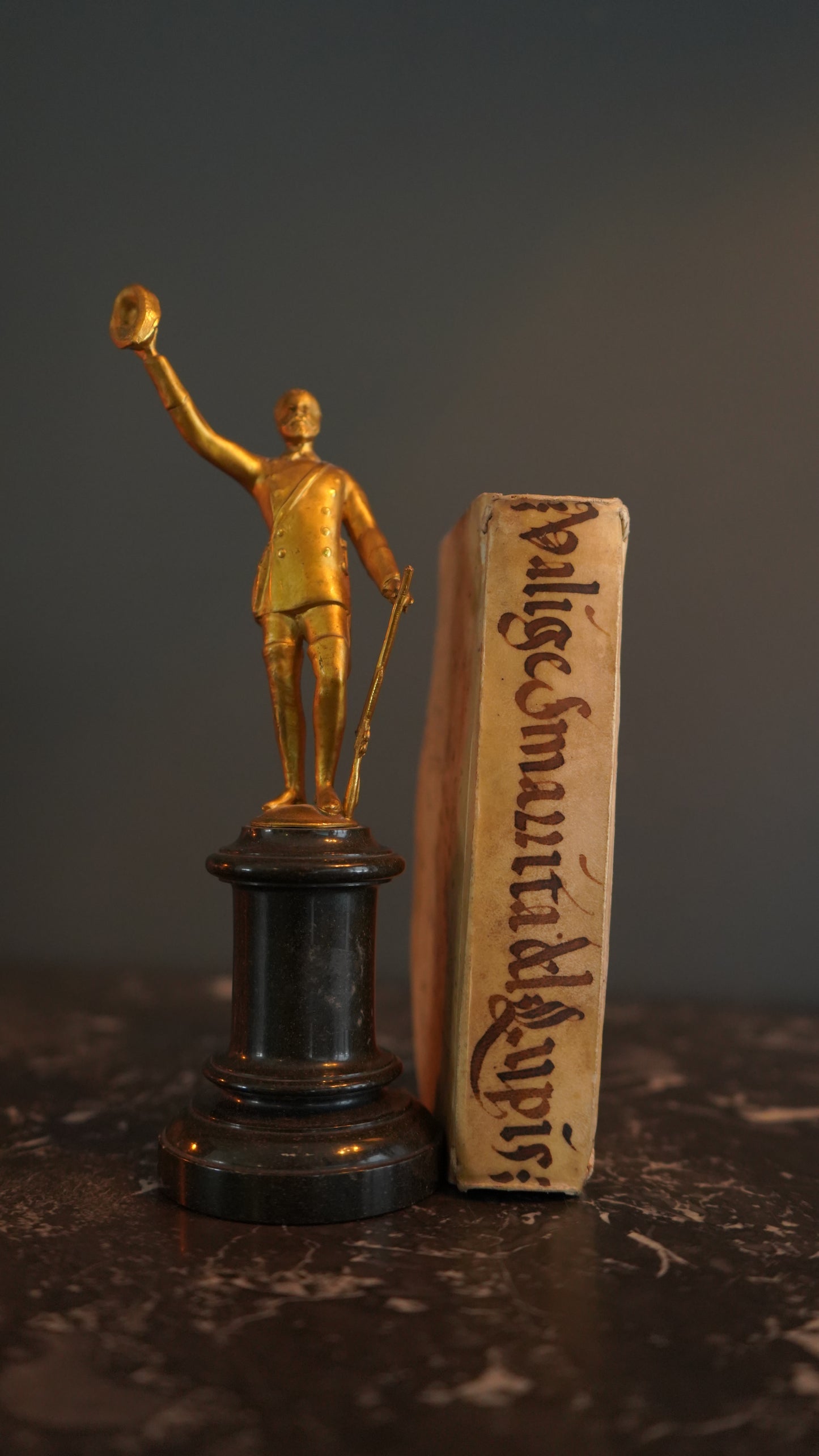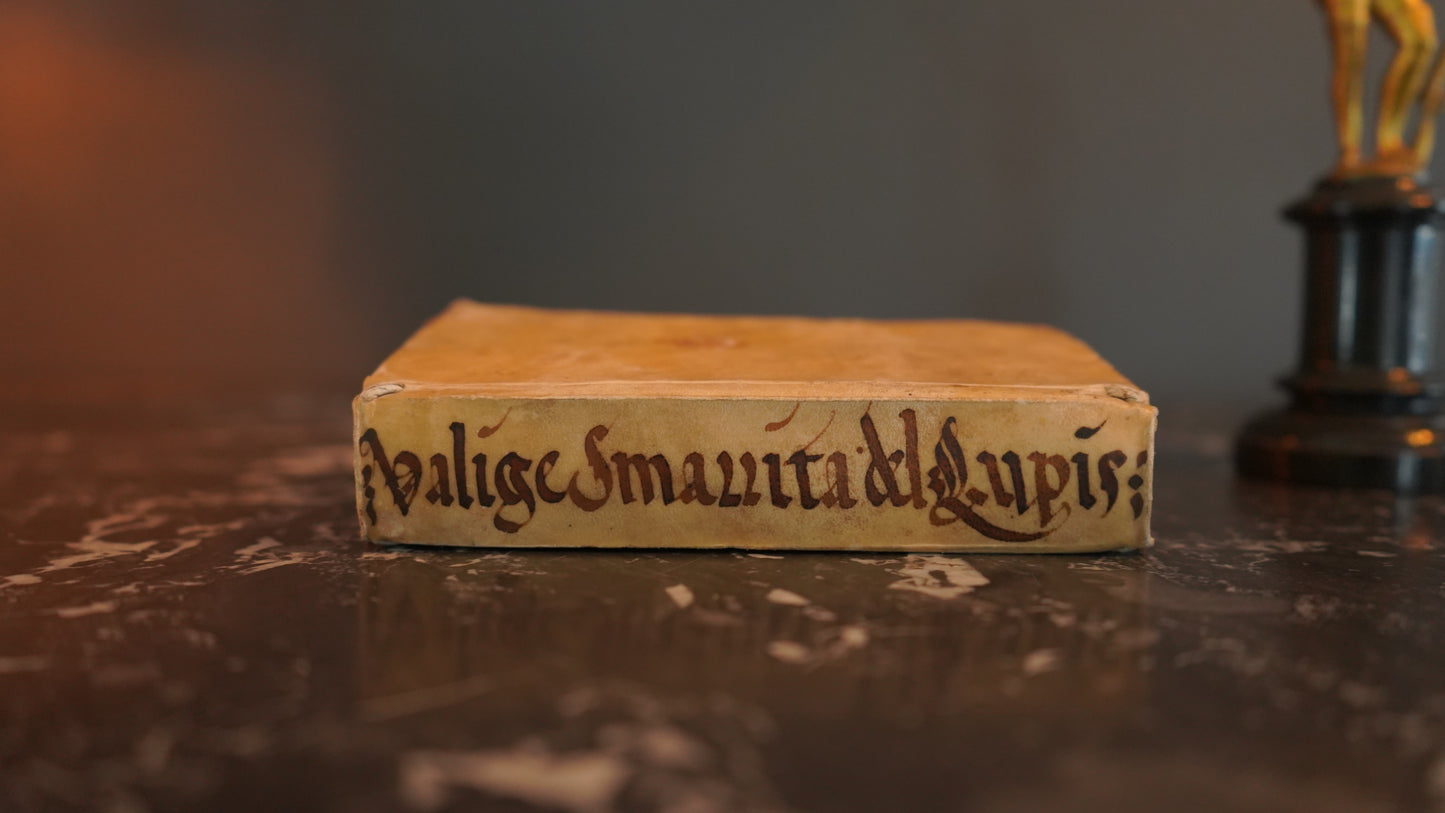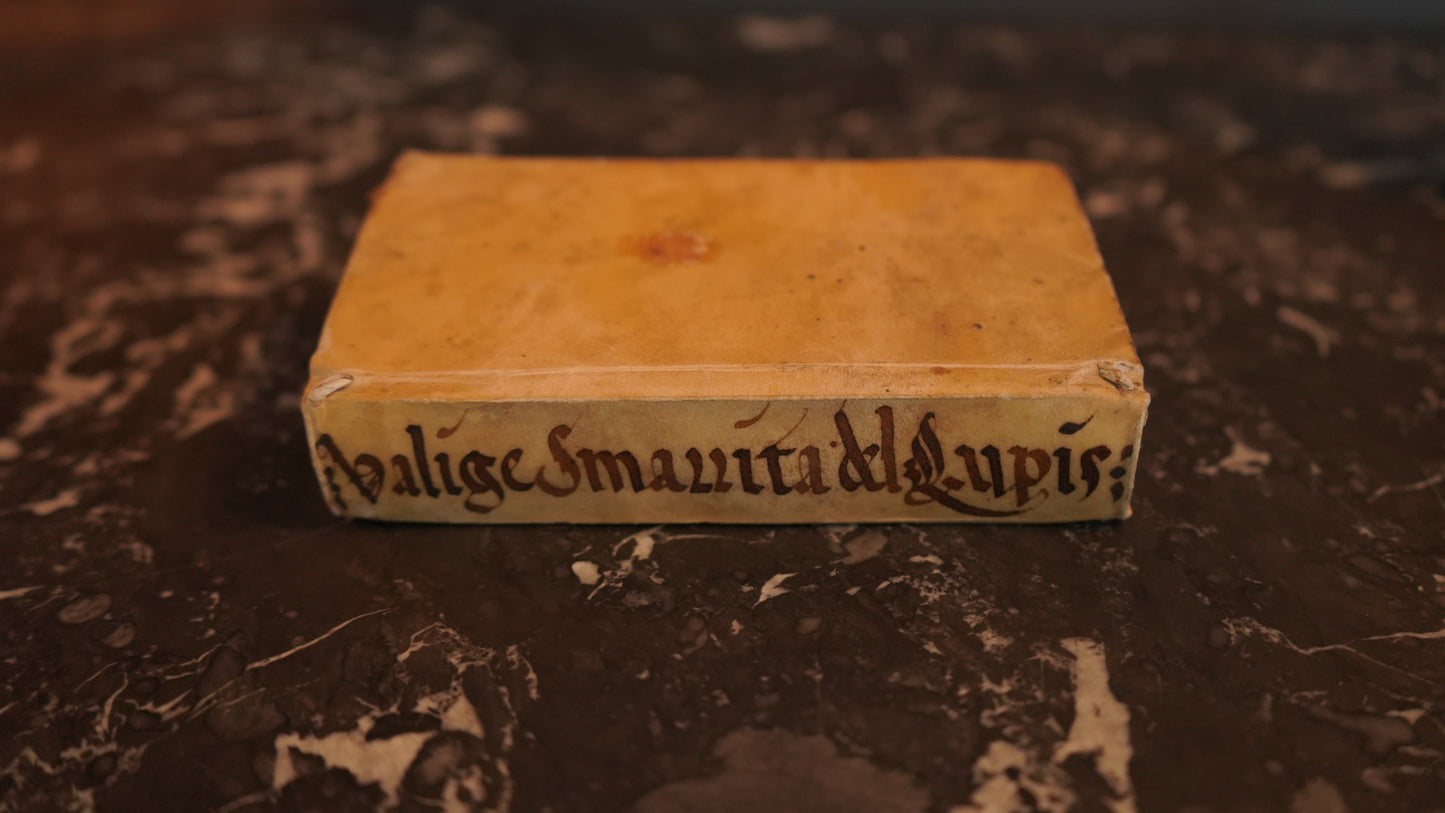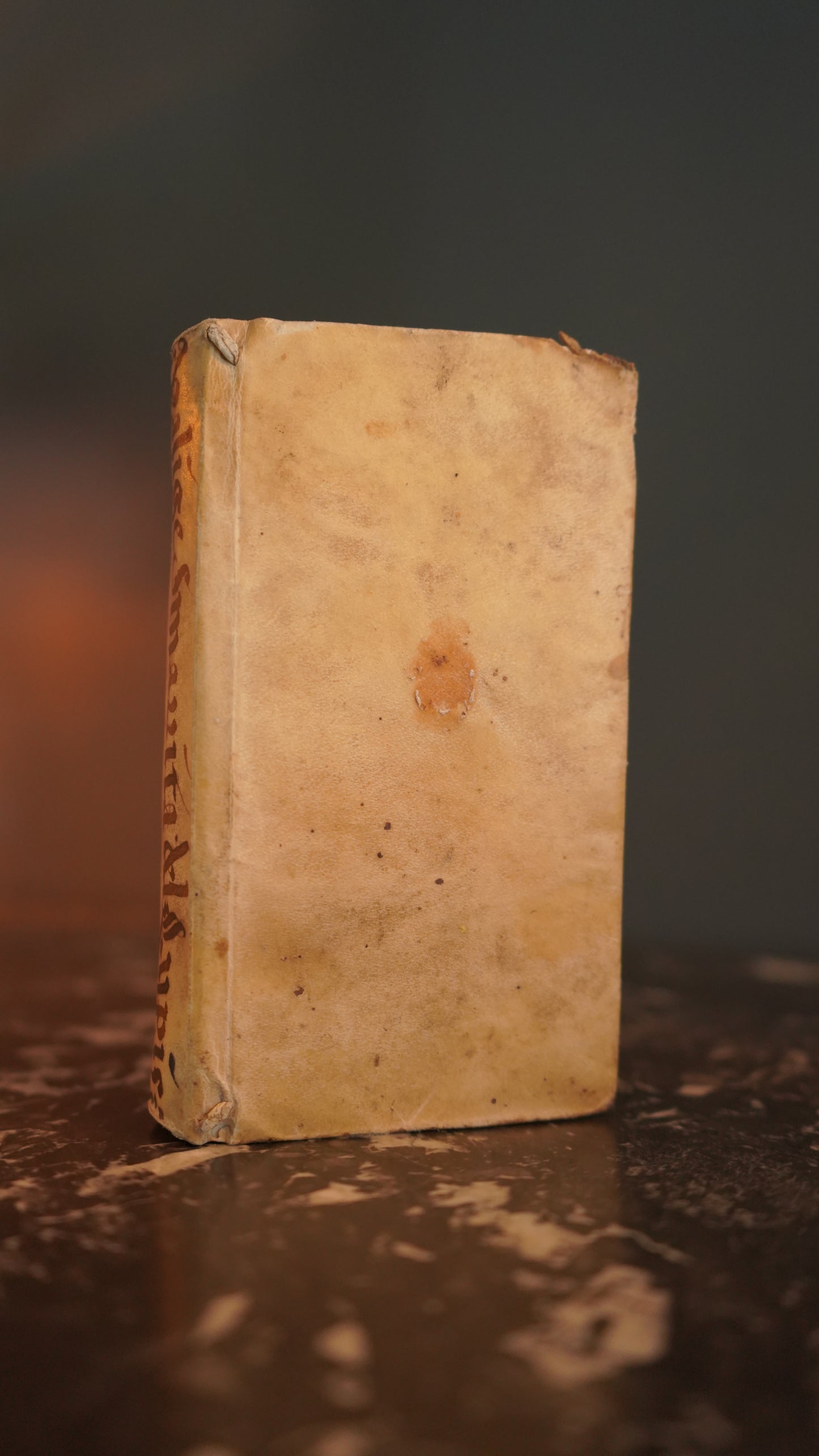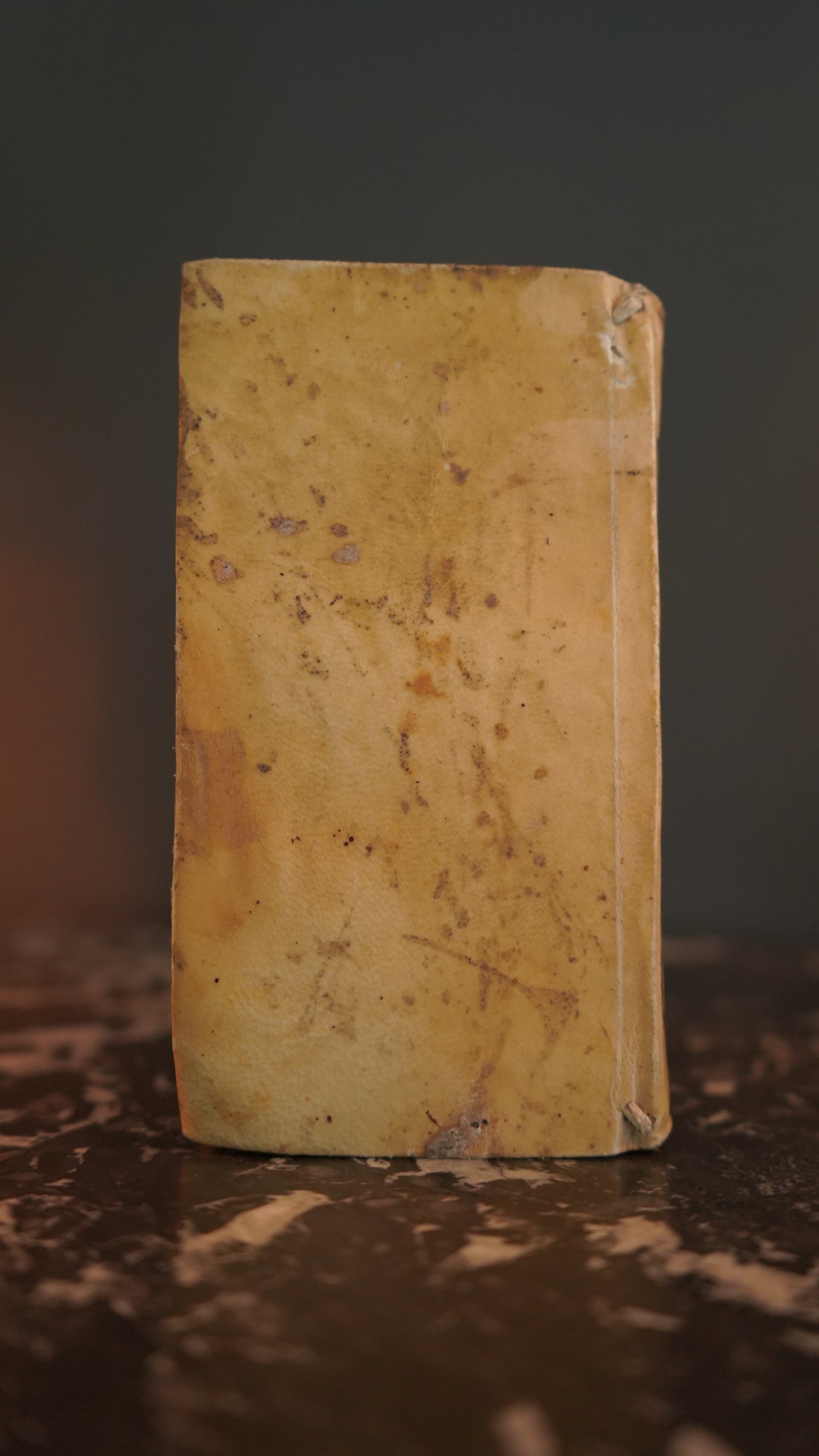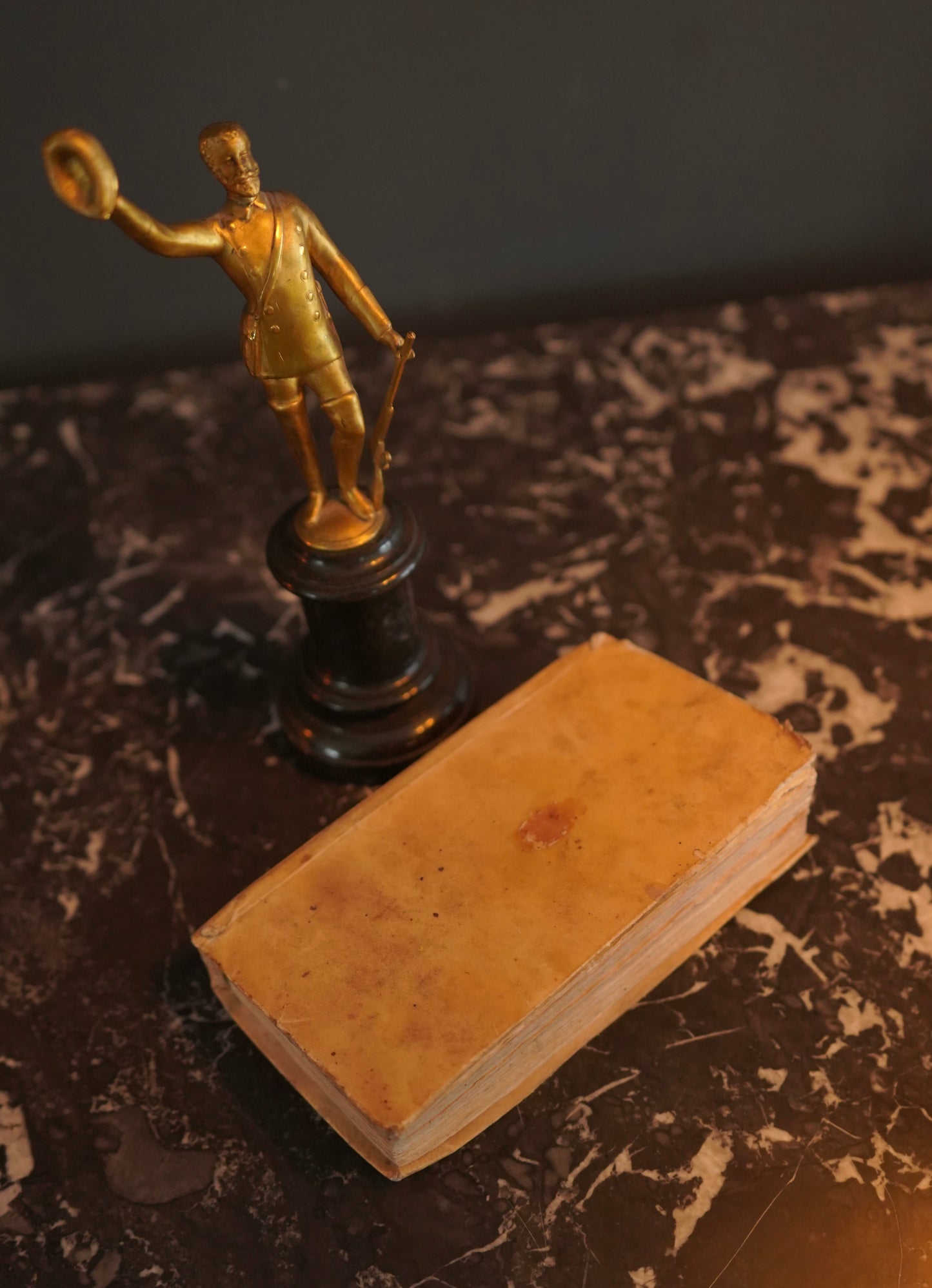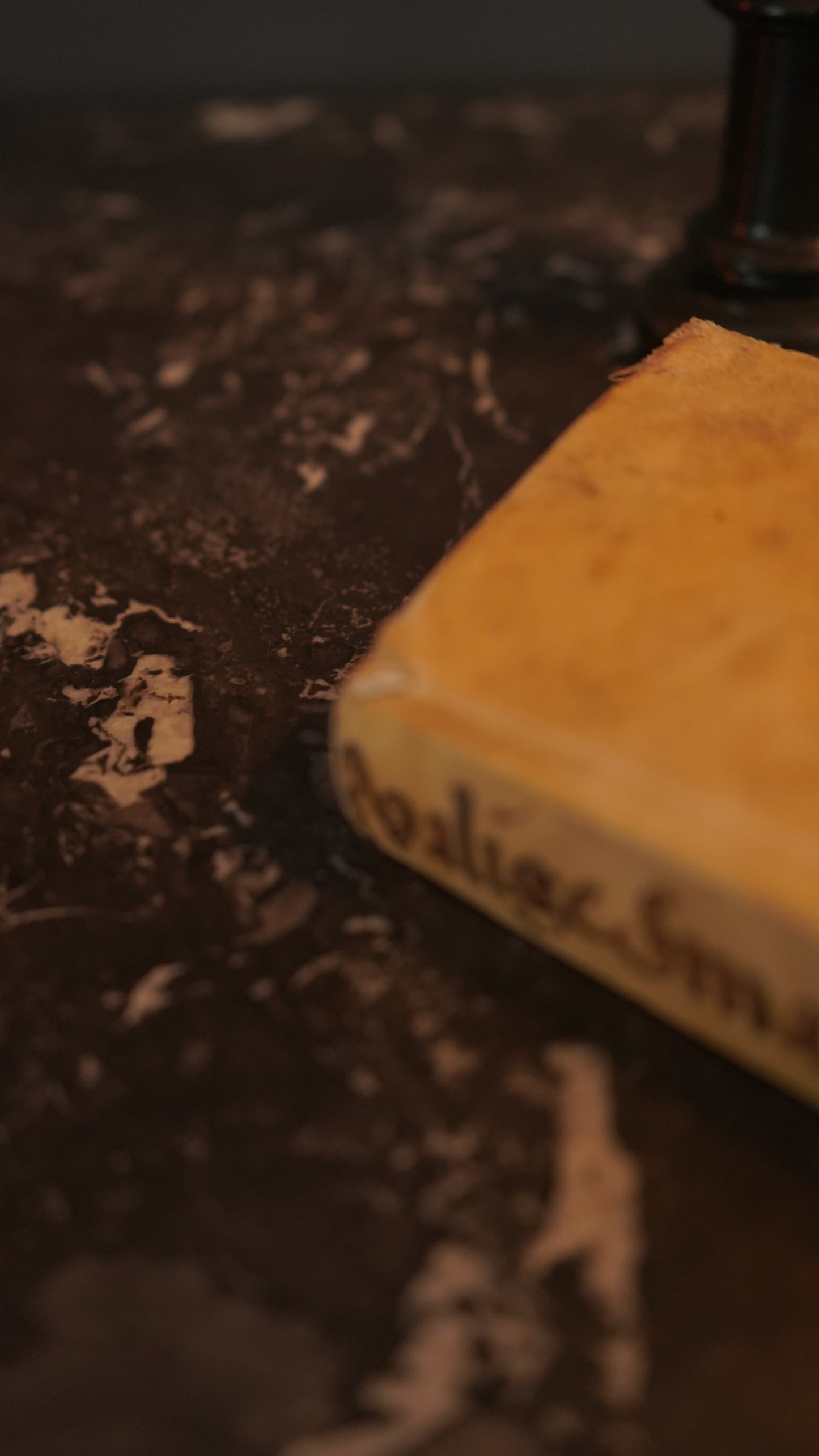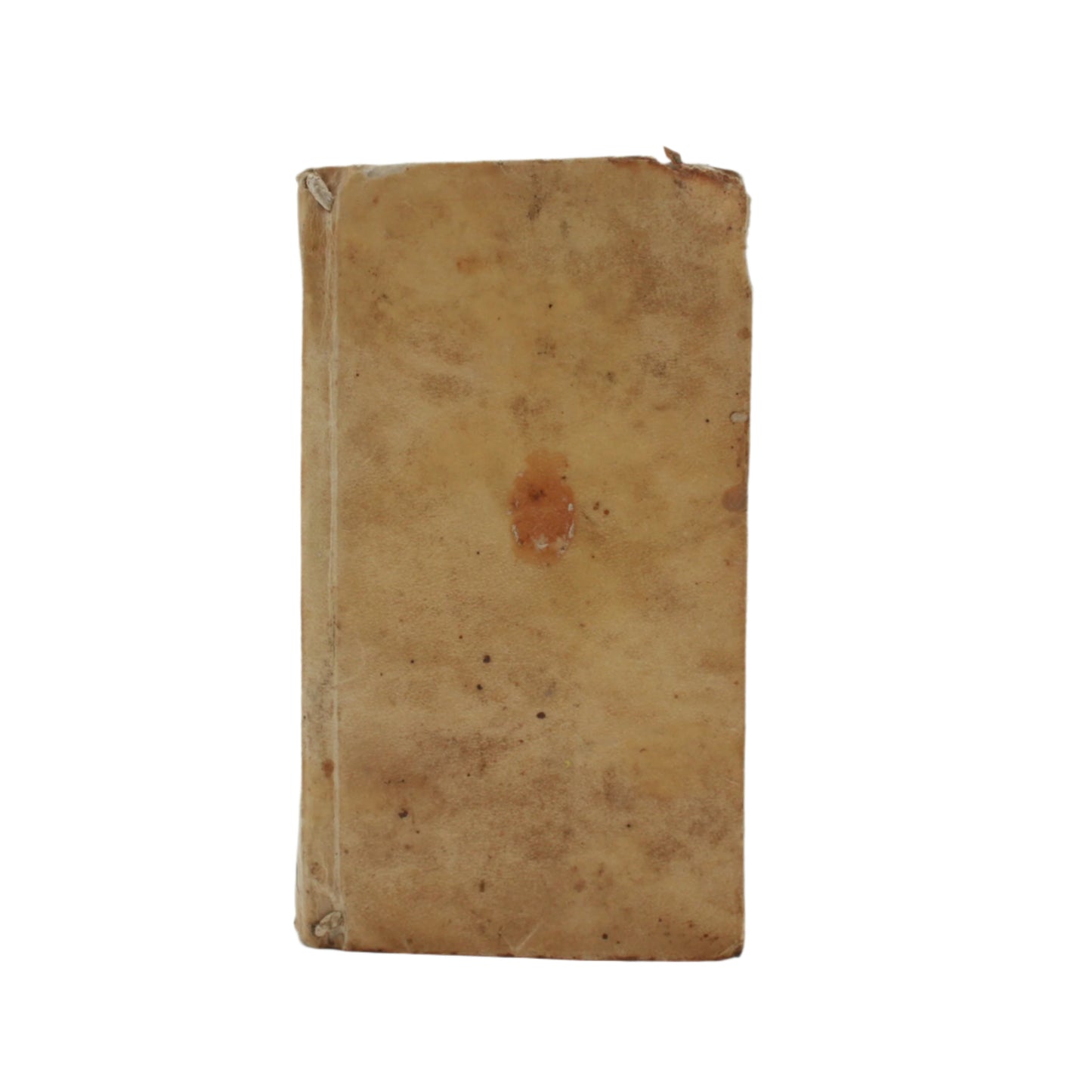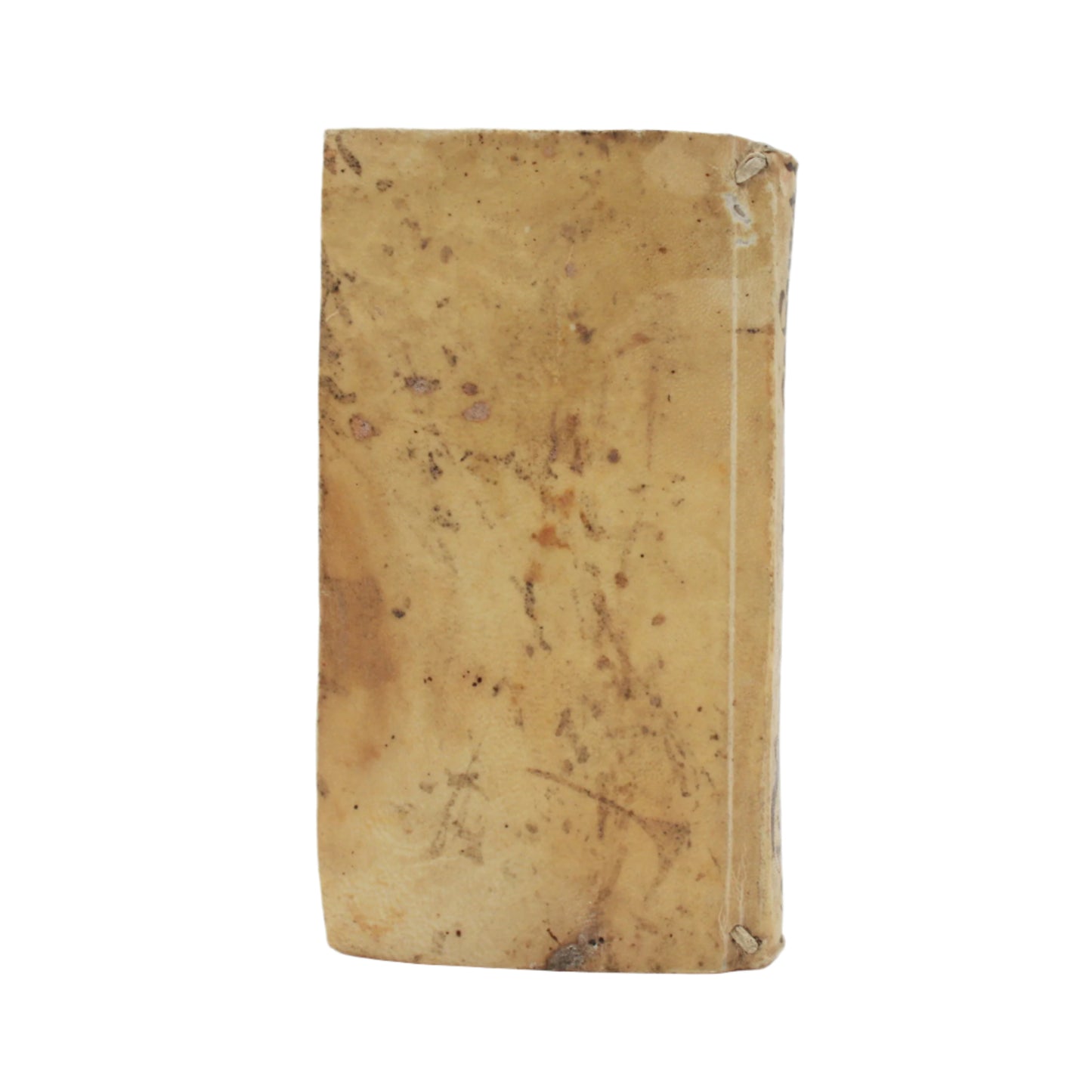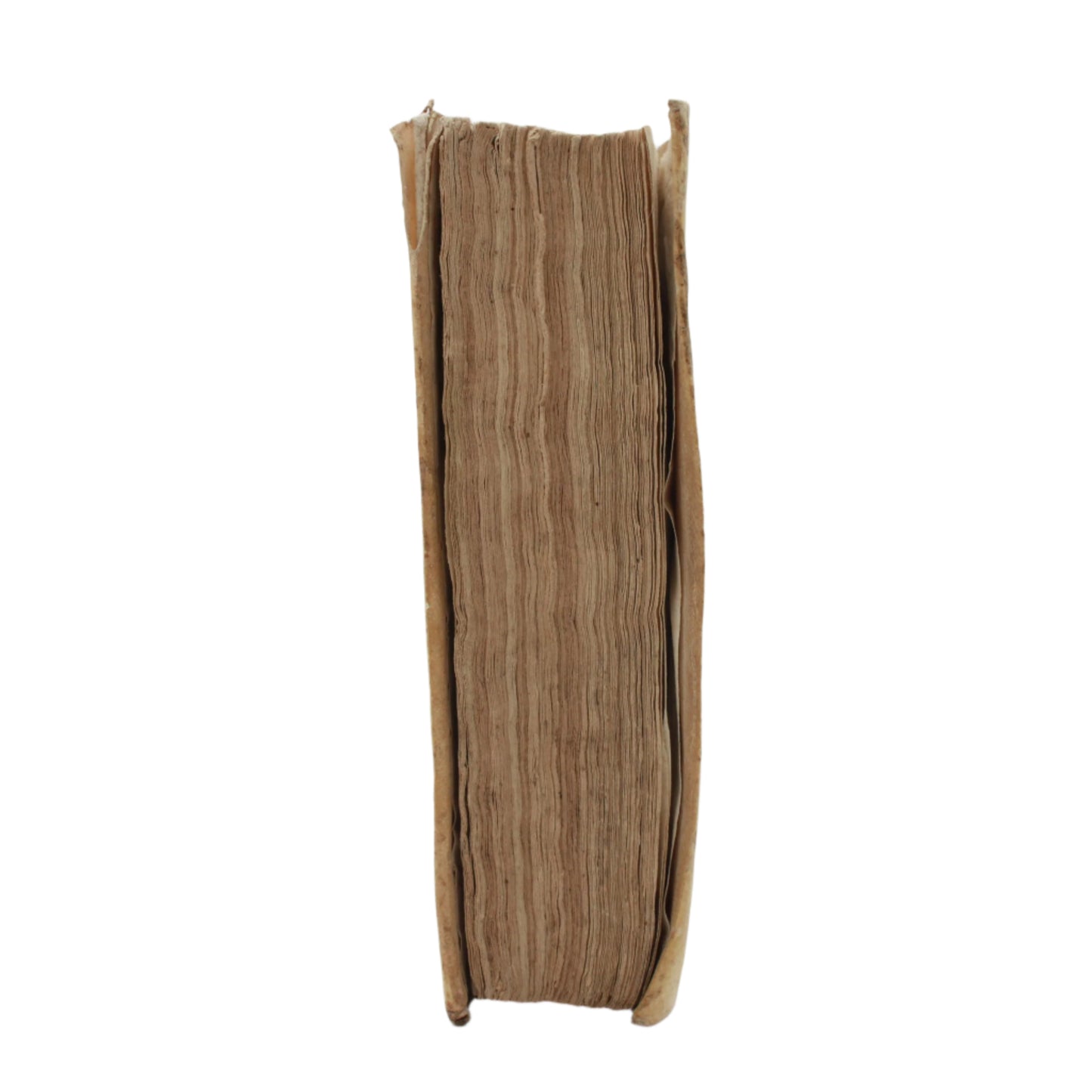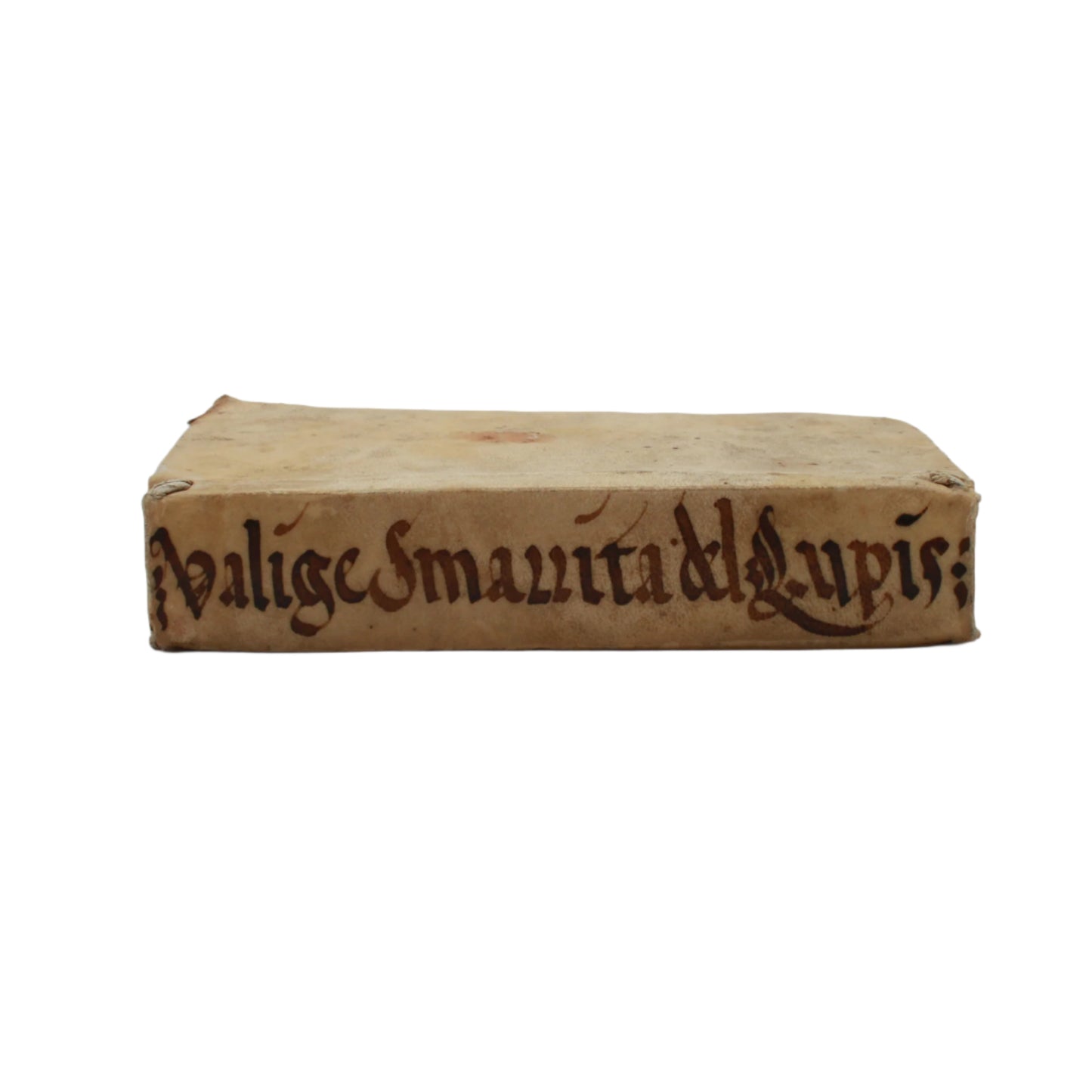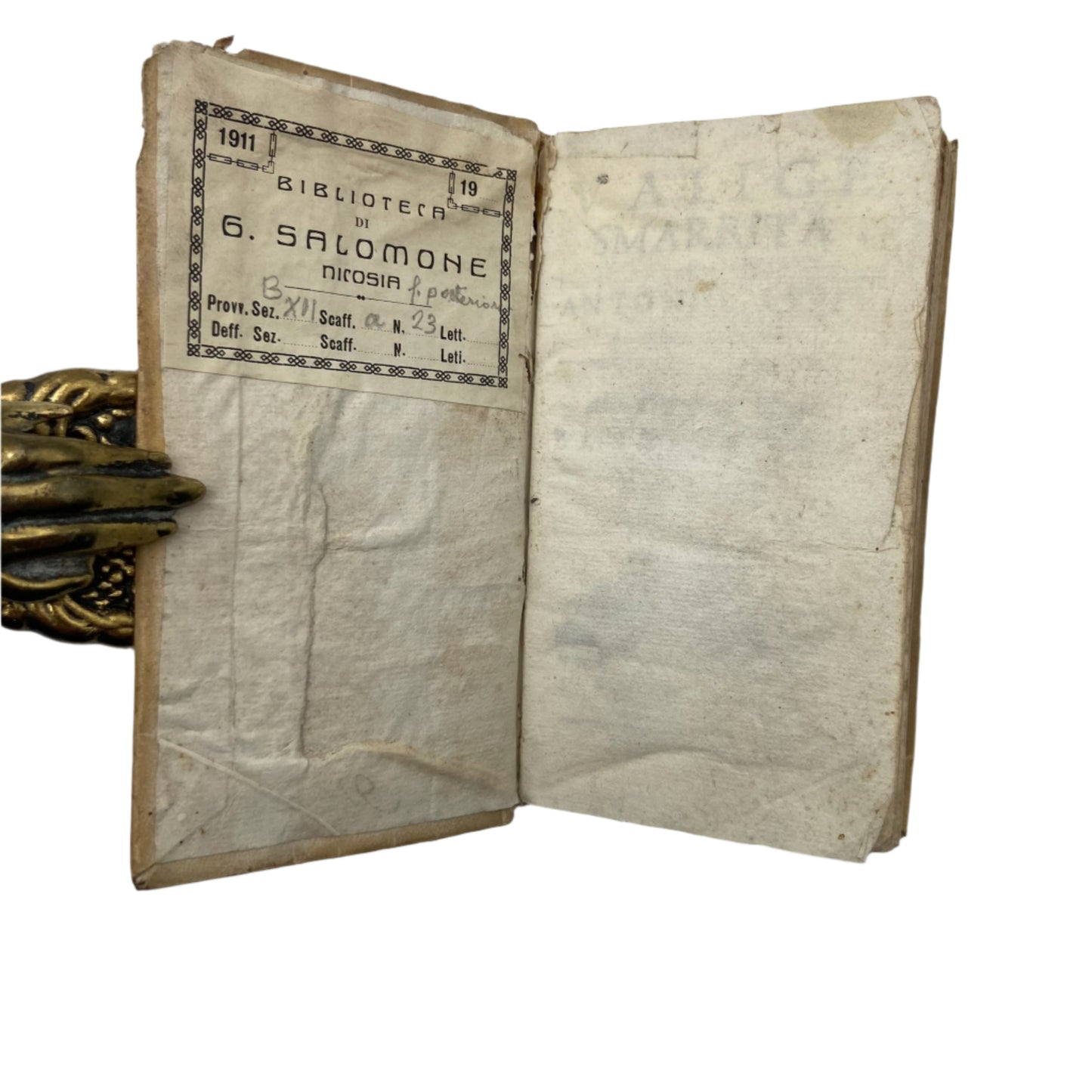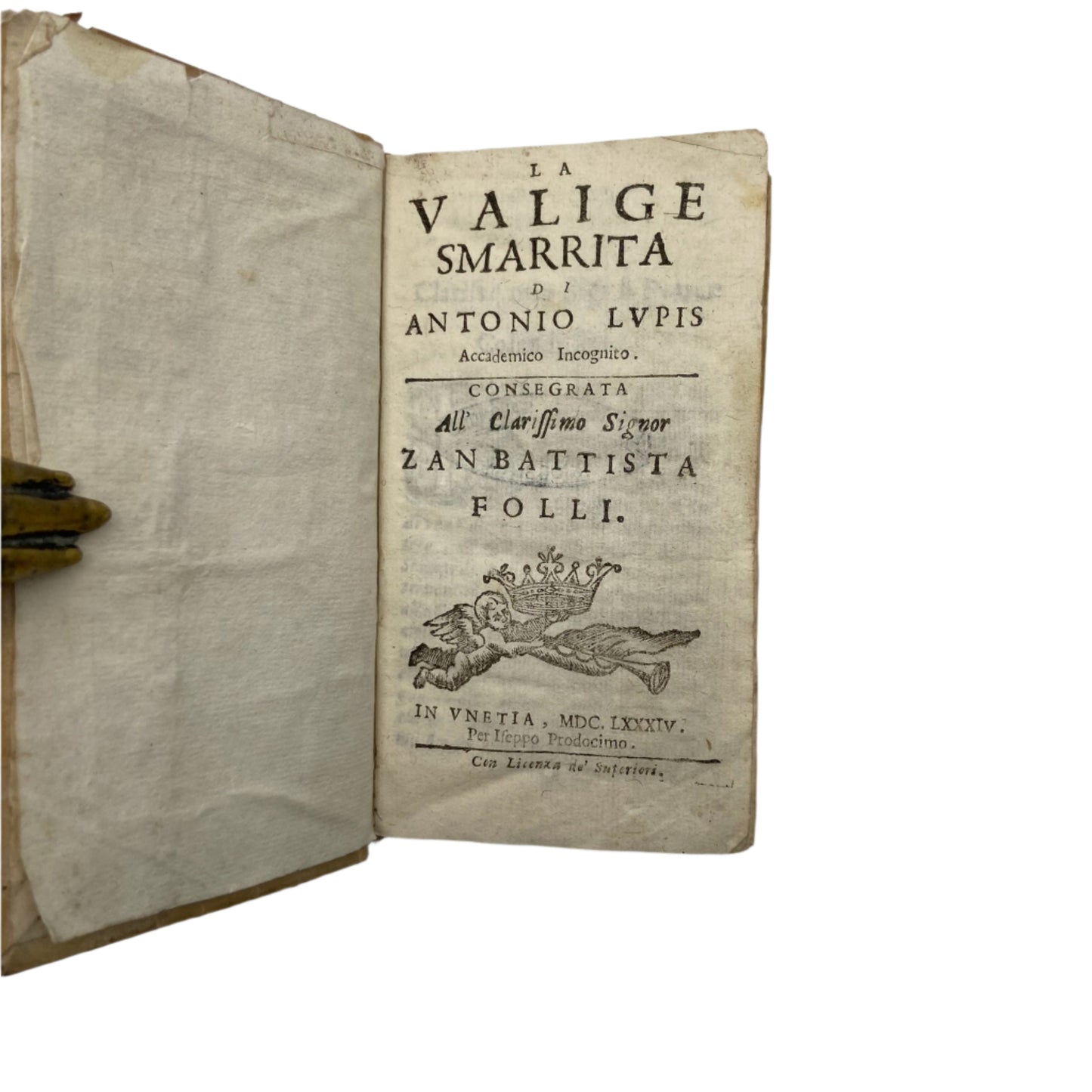Austyn Marie
Miniature 1675 "La Valge Smarrita di antonio Lupis" Italian Vellum Book
Miniature 1675 "La Valge Smarrita di antonio Lupis" Italian Vellum Book
Couldn't load pickup availability
This small Italian volume, titled Valige Smarrita (literally “The Lost Suitcase”), was written by Antonio Lupis and printed in Naples in 1675. Antonio Lupis (circa 1612–circa 1680) was an Italian writer of the Baroque era, known for producing works that blended moral or allegorical themes with narrative flair. The 17th century in Italy was marked by the flourishing of Baroque art and literature, characterized by its ornate style and penchant for dramatic, moral undertones. It is likely that Valige Smarrita follows this pattern, using the concept of a lost suitcase as a device to explore human folly, fate, or ethical lessons in a manner both entertaining and instructive.
In keeping with the Baroque period’s tastes, the book may offer satirical commentary on social norms or contain didactic messages woven into its storyline. Readers of the time enjoyed such narratives, which combined witty or imaginative scenarios with a moral core, reflecting the broader cultural fascination with life’s unexpected twists and turns. Naples, where the volume was published, was a significant cultural hub in 17th-century Italy, providing a fertile environment for the dissemination of new literary works that appealed to audiences hungry for engaging and reflective content.
One of the book’s distinctive features is its limp vellum binding, a common style for Italian publications of this era. The vellum, which has naturally aged and acquired spots or discoloration, is marked on the spine with a handwritten title—typical of 17th-century practice when owners or booksellers often labeled the covers themselves. The volume is small in format, suggesting it was intended to be portable or convenient for personal reading. A previous ownership label or stamp, referencing “G. Salomone,” is found on the front endpaper, indicating the book’s passage through private hands and adding a layer of provenance.
Condition:
The vellum shows moderate soiling and minor stains, consistent with its age. There is some rubbing and creasing, especially along the edges and corners, reflecting years of handling. Internally, the pages display light foxing and toning, which are common in books from the 17th century. Despite these signs of wear, the spine remains intact, and the text block is secure. Overall, Valige Smarrita stands as a well-preserved example of Baroque-era Italian literature, reflecting both the stylistic qualities and cultural preoccupations of its time.
No return or exchanges
No return or exchanges
Buyer can contact seller about any issues with an order.
email: austynmariedesign@gmail.com
